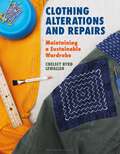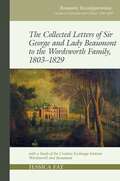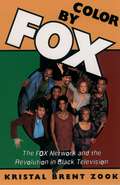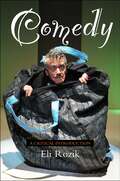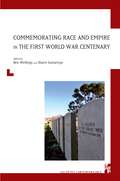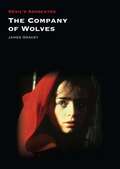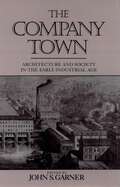- Table View
- List View
Circus balancing act (UEB Contracted)
This page shows two circus acrobats. The first acrobat stands facing forward at the bottom of the page, while the second one balances upside down, on one hand, on the first acrobat's head. There is a locator dot shown, which will be at the top left of the page when the image is the right way up. At the bottom of the page are the feet of the first acrobat, who is supporting the second acrobat. Above these are his legs wearing tights, and his bare chest. Up again are his strong shoulders with his arms held out wide to the left and right, to make his stance more stable. He wears bands on his wrists to reduce the risk of injury. His head is bearing the weight of the second acrobat further up the page who is balancing on one hand. The second acrobat wears a band on his wrist, and his arm continues vertically up the page. To the right of this his upside-down head can be found, and to the right again is his other arm wearing a wristband. Up the page from his head are his bare chest and his two legs stretched out to the left and right to help him balance.
Circus balancing act (UEB uncontracted)
This page shows two circus acrobats. The first acrobat stands facing forward at the bottom of the page, while the second one balances upside down, on one hand, on the first acrobat's head. There is a locator dot shown, which will be at the top left of the page when the image is the right way up. At the bottom of the page are the feet of the first acrobat, who is supporting the second acrobat. Above these are his legs wearing tights, and his bare chest. Up again are his strong shoulders with his arms held out wide to the left and right, to make his stance more stable. He wears bands on his wrists to reduce the risk of injury. His head is bearing the weight of the second acrobat further up the page who is balancing on one hand. The second acrobat wears a band on his wrist, and his arm continues vertically up the page. To the right of this his upside-down head can be found, and to the right again is his other arm wearing a wristband. Up the page from his head are his bare chest and his two legs stretched out to the left and right to help him balance.
Circus Ringmaster (Large Print)
This is a picture of the circus ringmaster in his traditional costume holding a whip. He is standing facing forward in the middle of the page so all his limbs and facial features can be seen. There is a locator dot shown, which will be at the top left of the page when the image is the right way up. At the top of the page is the ringmaster's tall top hat with some wisps of hair sticking out. Just down the page is his face with two eyes, nose and mouth visible. Down again are his bow tie, shirt and three-buttoned waistcoat. To either side are the lapels of his long frock coat, which comes down to his waist at the front and to his knees at the back. It has two buttons to the left of the waistcoat buttons. His arms are held out wide, the one to the right is holding the whip. Further down the page the ringmaster wears long trousers tucked into his long leather riding boots.
Circus Ringmaster (UEB Contracted)
This is a picture of the circus ringmaster in his traditional costume holding a whip. He is standing facing forward in the middle of the page so all his limbs and facial features can be seen. There is a locator dot shown, which will be at the top left of the page when the image is the right way up. At the top of the page is the ringmaster's tall top hat with some wisps of hair sticking out. Just down the page is his face with two eyes, nose and mouth visible. Down again are his bow tie, shirt and three-buttoned waistcoat. To either side are the lapels of his long frock coat, which comes down to his waist at the front and to his knees at the back. It has two buttons to the left of the waistcoat buttons. His arms are held out wide, the one to the right is holding the whip. Further down the page the ringmaster wears long trousers tucked into his long leather riding boots.
Circus Ringmaster (UEB uncontracted)
This is a picture of the circus ringmaster in his traditional costume holding a whip. He is standing facing forward in the middle of the page so all his limbs and facial features can be seen. There is a locator dot shown, which will be at the top left of the page when the image is the right way up. At the top of the page is the ringmaster's tall top hat with some wisps of hair sticking out. Just down the page is his face with two eyes, nose and mouth visible. Down again are his bow tie, shirt and three-buttoned waistcoat. To either side are the lapels of his long frock coat, which comes down to his waist at the front and to his knees at the back. It has two buttons to the left of the waistcoat buttons. His arms are held out wide, the one to the right is holding the whip. Further down the page the ringmaster wears long trousers tucked into his long leather riding boots.
Cities in Action: The Commonwealth and International Library: Library and Technical Information Division
by Eugene Van CleefCities in Action focuses on the planning of cities. The book first discusses the planning of cities wherein planning is considered as a protective device that influences orderly procedure and cooperation among citizens. Accessibility is seen as an influential factor in the rise and distribution of cities. The text underscores that along with the rise of cities is the establishment of sidewalks, malls, parks, and shopping centers. Zoning and land use are also important in the planning of cities. These factors help in identifying the structures that should be built or established in a particular place. The text also takes a look at the establishment of industrial parks and industrial upgrading of cities. Management of water supply, noise, and pollution is influential in the appreciation of cities. Computer systems are also applied to city operations, including the work of planning. The text also underscores the need for residential parking as the rise of cities has resulted to the increase in automobiles. The book also underlines that decongestion of traffic is viewed as an important factor in the delivery of goods and services to citizens. Roads, avenues, and expressways are seen as helpful in lessening traffic in cities. The book is a vital source of data for city planners.
The City of Domes
by John D. BarryA walk with an architect about the courts and palaces of the Panama Pacific International Exposition
Classic Modern Homes of the Thirties: 64 Designs by Neutra, Gropius, Breuer, Stone and Others
by Katherine Morrow Ford James FordSplendid pictorial record of architectural style strongly influenced by Bauhaus movement. Over 300 illustrations show interiors, exteriors. Details on construction, site, cost, more.
Closer than Ever: The Unique Six-Decade Songwriting Partnership of Richard Maltby Jr. and David Shire (Broadway Legacies)
by Joshua RosenblumHow do musical theater songs actually get written? What enables some composer and lyricist partnerships to last for decades? Composer David Shire and lyricist Richard Maltby, Jr., two of the most gifted songwriters of our time, are revered among musical theater lovers for their ground-breaking off-Broadway revues Starting Here, Starting Now and Closer Than Ever, as well as for the Broadway musicals Baby and Big. Rosenblum sets out to increase appreciation for Maltby and Shire's large and impressive body of work and establish their place in musical theater history. This book chronicles their sixty-six-year (and counting) partnership, giving full behind-the-scenes accounts of their musicals, interspersed with deep-dive analyses of standout individual numbers. Other well-known artistic figures who feature prominently in the Maltby/Shire story include Stephen Sondheim, Hal Prince, Michael Stewart, Francis Ford Coppola, Craig Lucas, Mike Ockrent, Susan Stroman, John Weidman, Charles Strouse, Garth Drabinsky, Adam Gopnik, Jason Robert Brown, and Jonathan Tunick. Using his experiences as a Broadway conductor, music journalist, and professor of musical theater composition, as well as his long-term personal and professional acquaintance with both Maltby and Shire, Joshua Rosenblum is uniquely suited to chronicle their lives, careers, and creative output. The songwriters, both of whom are engaging and articulate in describing what they do, are quoted liberally throughout the book in exclusive interviews, creating the impression that one is spending time with two inspiring creative artists who happen to be great company.
Clothing Alterations and Repairs: Maintaining a Sustainable Wardrobe
by Chelsey Byrd LewallenA detailed, step-by-step guide to successfully altering and repairing ready-made apparel that will help you achieve the perfect fit and extend the life of your clothing.Whether you are interested in tailoring your wardrobe, starting a business, or learning a skill that will save you money and the planet, you'll find what you need through illustrated step-by-step projects and no-nonsense videos. You'll learn to make alterations to your ready-made clothing, including a variety of hemming techniques and taking in/ letting out seams, and repair methods to fix zippers, tears, and holes. There are also detailed guidelines on more complex techniques, including adjusting suit jacket sleeves, reshaping necklines and even fixing backpacks, tents and bags.
Clown riding a 'Giraffe' unicycle (Large Print)
This is an image of a circus clown riding a one-wheeled cycle in the middle of the page. He is facing to the right with only one eye visible. There is a locator dot shown, which will be at the top left of the page when the image is the right way up. At the top centre of the page is the clown's little bowler hat sitting on his long hair. Just to the right of this is his face seen from the side with one eye, his comedy red nose and his big wide mouth. His arms are thrown out wide to the left and right from his right-facing body and down the page from this is his bottom sitting on the seat of the unicycle. Down the page again is the frame of the cycle with the clown's legs to the left and right and his feet in enormous clown boots on the pedals of the machine. His foot to the left is behind the arm of the pedal. At the bottom of the page is the cycle's wheel, connected to the pedals by a chain.
Clown riding a 'Giraffe' unicycle (UEB Contracted)
This is an image of a circus clown riding a one-wheeled cycle in the middle of the page. He is facing to the right with only one eye visible. There is a locator dot shown, which will be at the top left of the page when the image is the right way up. At the top centre of the page is the clown's little bowler hat sitting on his long hair. Just to the right of this is his face seen from the side with one eye, his comedy red nose and his big wide mouth. His arms are thrown out wide to the left and right from his right-facing body and down the page from this is his bottom sitting on the seat of the unicycle. Down the page again is the frame of the cycle with the clown's legs to the left and right and his feet in enormous clown boots on the pedals of the machine. His foot to the left is behind the arm of the pedal. At the bottom of the page is the cycle's wheel, connected to the pedals by a chain.
Clown riding a 'Giraffe' unicycle (UEB uncontracted)
This is an image of a circus clown riding a one-wheeled cycle in the middle of the page. He is facing to the right with only one eye visible. There is a locator dot shown, which will be at the top left of the page when the image is the right way up. At the top centre of the page is the clown's little bowler hat sitting on his long hair. Just to the right of this is his face seen from the side with one eye, his comedy red nose and his big wide mouth. His arms are thrown out wide to the left and right from his right-facing body and down the page from this is his bottom sitting on the seat of the unicycle. Down the page again is the frame of the cycle with the clown's legs to the left and right and his feet in enormous clown boots on the pedals of the machine. His foot to the left is behind the arm of the pedal. At the bottom of the page is the cycle's wheel, connected to the pedals by a chain.
The Collected Letters of Sir George and Lady Beaumont to the Wordsworth Family, 1803–1829: with a Study of the Creative Exchange between Wordsworth and Beaumont (Romantic Reconfigurations: Studies in Literature and Culture 1780-1850 #14)
Sir George Beaumont is a key figure in the history of British art. As well as being a respected amateur landscape painter, he was a prominent patron, a collector, and co-founder of the National Gallery. William Wordsworth described Beaumont’s friendship as one of the chief blessings of his life, and this edition reveals that the two men became collaborators as well as companions. In addition to documenting unique perspectives on social, political, and cultural events of the early nineteenth century (providing new contexts for reading Wordsworth’s mature poetry), the letters collected here chart the progress of an increasingly intimate inter-familial relationship. The picture that emerges is of a coterie that – in influence, creativity, and affection – rivals Wordsworth’s more famous exchange with Coleridge at Nether Stowey in the 1790s. The edition includes an extended study of how Wordsworth and Beaumont helped shape one another’s work, tracing processes of mutual artistic development that involved not only a meeting of aristocratic refinement and rural simplicity, of a socialite and a lover of retirement, of a painter and a poet, but also an aesthetic rapprochement between neoclassical and romantic values, between the impulse to idealize and the desire to particularize.
The Colonial Craftsman
by Carl BridenbaughIn colonial America, craftsmen comprised the largest segment of the population, after farmers. They were cabinetmakers, silversmiths, pewterers, printers, painters, engravers, blacksmiths, brass button-makers, shipwrights, hatters, shoemakers, and other artisans, and they manufactured the tools, clothing, household goods, and other essential products needed to sustain life and trade in the New World. <p><p> In this superb study, a distinguished American historian examines the lives and work of American craftsmen in the years before the Revolution — the golden age of colonial craftsmanship — showing them at work, at play, at worship, at school, at home, competing in their trades, striving to get ahead, and playing a dynamic role as citizens in bringing about American independence.Natural resources, special crafts of the different colonies, and New World "marketing" of those crafts are closely studied. Students of American history, culture, and the arts and crafts will find this a richly rewarding study — authoritative, well-researched, and highly readable. It is further enhanced with carefully chosen illustrations from Diderot's Encyclopédie, the great 18th-century reference work on technology, whose detailed engravings accurately represent the crafts of the period.
Colonial-Era Caribbean Theatre: Issues in Research, Writing and Methodology
Cutting across academic boundaries, this volume brings together scholars from different disciplines who have explored together the richness and complexity of colonial-era Caribbean theatre. The volume offers a series of original essays that showcase individual expertise in light of broader group discussions. Asking how we can research effectively and write responsibly about colonial-era Caribbean theatre today, our primary concern is methodology. Key questions are examined via new research into individual case studies on topics ranging from Cuban blackface, commedia dell’arte in Suriname and Jamaican oratorio to travelling performers and the influence of the military and of enslaved people on theatre in Saint-Domingue. Specifically, we ask what particular methodological challenges we as scholars of colonial-era Caribbean theatre face and what methodological solutions we can find to meet those challenges. Areas addressed include our linguistic limitations in the face of Caribbean multilingualism; issues raised by national, geographical or imperial approaches to the field; the vexed relationship between metropole and colony; and, crucially, gaps in the archive. We also ask what implications our findings have for theatre performance today – a question that has led to the creation of a new work set in a colonial theatre and outlined in the volume’s concluding chapter.
Color By Fox: The Fox Network And The Revolution In Black Television
by Kristal Brent ZookFollowing the overwhelming success of "The Cosby Show" in the 1980s, an unprecedented shift took place in television history: white executives turned to black dollars as a way of salvaging network profits lost in the war against video cassettes and cable T.V. Not only were African-American viewers watching disproportionately more network television than the general population but, as Nielsen finally realized, they preferred black shows. As a result, African-American producers, writers, directors, and stars were given an unusual degree of creative control over shows such as "The Fresh Prince of Bel Air," "Roc," "Living Single," and "New York Undercover". What emerged were radical representations of African-American memory and experience. Offering a fascinating examination of the explosion of black television programming in the 1980s and 1990s, this book provides, for the first time ever, an interpretation of black TV based in both journalism and critical theory. Locating a persistent black nationalist desire--a yearning for home and community--in the shows produced by and for African-Americans in this period, Kristal Brent Zook shows how the Fox hip-hop sitcom both reinforced and rebelled against earlier black sitcoms from the sixties and seventies. Incorporating interviews with such prominent executives, producers, and stars as Keenen Ivory Wayans, Sinbad, Quincy Jones, Robert Townsend, Charles Dutton, Yvette Lee Bowser, and Ralph Farquhar, this study looks at both production and reception among African-American viewers, providing nuanced readings of the shows themselves as well as the sociopolitical contexts in which they emerged. While black TV during this period may seem trivial or buffoonish to some, Color by Fox reveals its deep-rooted ties to African-American protest literature and autobiography, and a desire for social transformation.
The Colosseum, Rome - Multipage image (Large Print)
This is a set of images of the Colosseum amphitheatre in Rome, Italy; it comprises a page of keys, a plan, and a cross section. It is a multipage image set on three pages. There is a locator dot shown, which will be at the top left of the page when the image is the right way up. Rome: keys for plan and cross section - These keys show the features and the abbreviations used on the plan and cross section pages. The top of the page refers to the plan and the features of the cross section are on the bottom of the page.Colosseum, Rome - plan of upper and ground floor: This page shows a plan view of the Colosseum (seen from above) with a scale shown in the top left. The structure is four stories high and oval shaped. It slopes down from the full height of the supporting piers at its circumference to the arena floor at ground level, in the centre of the page. Tiers of seating surround the arena. The gaps between the seating represent the entrances to the internal stairs leading down to ground-level access. The bottom left quarter of the plan has been cut away to show the internal supporting walls of the building. There are many underground passages and rooms beneath the building; these have not been shown. They housed people and animals taking part in the staged events as well as props, scenery and special effects. There was access from them to the arena floor through hidden trapdoors.Colosseum, Rome - cross section of one side - This page shows a cut-away view of one side of the Colosseum. There are labels on the left of the page with leader lines pointing to the floors of the building on the right. At the bottom left of the page is the arena floor. To the right of this the ground floor can be found with the tiers of seating going diagonally up the page from it. Down the page from the seating is the cut-away view of the inside of the building, showing the supporting pillars and the stairs to the upper levels.
The Colosseum, Rome - Multipage image (UEB Contracted)
This is a set of images of the Colosseum amphitheatre in Rome, Italy; it comprises a page of keys, a plan, and a cross section. It is a multipage image set on three pages. There is a locator dot shown, which will be at the top left of the page when the image is the right way up. Rome: keys for plan and cross section - These keys show the features and the abbreviations used on the plan and cross section pages. The top of the page refers to the plan and the features of the cross section are on the bottom of the page.Colosseum, Rome - plan of upper and ground floor: This page shows a plan view of the Colosseum (seen from above) with a scale shown in the top left. The structure is four stories high and oval shaped. It slopes down from the full height of the supporting piers at its circumference to the arena floor at ground level, in the centre of the page. Tiers of seating surround the arena. The gaps between the seating represent the entrances to the internal stairs leading down to ground-level access. The bottom left quarter of the plan has been cut away to show the internal supporting walls of the building. There are many underground passages and rooms beneath the building; these have not been shown. They housed people and animals taking part in the staged events as well as props, scenery and special effects. There was access from them to the arena floor through hidden trapdoors.Colosseum, Rome - cross section of one side - This page shows a cut-away view of one side of the Colosseum. There are labels on the left of the page with leader lines pointing to the floors of the building on the right. At the bottom left of the page is the arena floor. To the right of this the ground floor can be found with the tiers of seating going diagonally up the page from it. Down the page from the seating is the cut-away view of the inside of the building, showing the supporting pillars and the stairs to the upper levels.
The Colosseum, Rome - Multipage image (UEB Uncontracted)
This is a set of images of the Colosseum amphitheatre in Rome, Italy; it comprises a page of keys, a plan, and a cross section. It is a multipage image set on three pages. There is a locator dot shown, which will be at the top left of the page when the image is the right way up. Rome: keys for plan and cross section - These keys show the features and the abbreviations used on the plan and cross section pages. The top of the page refers to the plan and the features of the cross section are on the bottom of the page.Colosseum, Rome - plan of upper and ground floor: This page shows a plan view of the Colosseum (seen from above) with a scale shown in the top left. The structure is four stories high and oval shaped. It slopes down from the full height of the supporting piers at its circumference to the arena floor at ground level, in the centre of the page. Tiers of seating surround the arena. The gaps between the seating represent the entrances to the internal stairs leading down to ground-level access. The bottom left quarter of the plan has been cut away to show the internal supporting walls of the building. There are many underground passages and rooms beneath the building; these have not been shown. They housed people and animals taking part in the staged events as well as props, scenery and special effects. There was access from them to the arena floor through hidden trapdoors.Colosseum, Rome - cross section of one side - This page shows a cut-away view of one side of the Colosseum. There are labels on the left of the page with leader lines pointing to the floors of the building on the right. At the bottom left of the page is the arena floor. To the right of this the ground floor can be found with the tiers of seating going diagonally up the page from it. Down the page from the seating is the cut-away view of the inside of the building, showing the supporting pillars and the stairs to the upper levels.
Comedy: A Critical Introduction
by Eli RozikHerewith an original approach to the study of comedy. While assimilating theoretical insights from Aristotle to the present day, it contests, inter alia, the theory of comedy's ritual origin; challenges the age-old and continuing attempts to determine the structure of action that characterises comedy; and suggests instead that structures of action are shared by all genres, and that it is the specific mood that accounts for their differences. Mood is a prism through which a playwright wishes the spectator to perceive a fictional world. Comedy is characterised by its light-hearted mood, which generates a specific kind of laughter. If mood determines the genre of a fictional world, in contrast to current theory, comedy, satiric drama and grotesque drama are different genres promoting different moods and aiming at different effects. Each genre should thus be read and experienced according to its inherent rules and not in terms of a theory that lumps these genres together. The book discusses the pivotal role of commedia dell'arte in both reflecting comedy's classical tradition and influencing subsequent developments, especially in comedy's style of acting; it explores the relations between comedy and carnival and between comedy and joke-telling; probes the view that comedy is characterised by a unique vision; and examines comedy in different media -- such as cinema, comics, puppet theatre, radio drama and TV drama. Eli Rozik questions the traditional semiotic view that all meaning is in the text, and suggests that, in generating comedic meaning, the spectator's contribution/reaction is no less vital than that of the text itself. Major contributions to a general theory of comedy, and to a sound methodology for the analysis of comedies, are presented, and ample reference to comedies and/or pertinent analyses of such comedies, written over the course of 2,500 years of theatre recorded history, is provided to enable readers to grasp ideas in their original terminology and logic. Each presentation is accompanied by critical comments which attempt both to introduce the problems involved and suggest possible solutions.
Commemorating Race and Empire in the First World War Centenary (Provence University Press)
First World War commemoration in Europe has been framed as a moment of national trial and as a collective European tragedy. But the ‘Great War for Civilisation’ was more than just a European conflict. It was in fact a global war, a clash of empires that began a process of nationalist agitation against imperial polities and the racisms that underpinned them in Asia, Africa and beyond. Despite the global context of Centenary commemorative activity these events remain framed by national and state imaginaries and ones in which the ideas about nation, race and imperialism that animated and dominated men and women during the Great War sit uncomfortably with modern sensibilities. By drawing on original archival research, translations from French and Mandarin into English and by employing multidisciplinary conceptual frames of analysis this exciting and innovative volume explores how race and empire, and racism and imperialism, were commemorated or forgotten during the First World War Centenary.
A Companion to the Medieval Theatre
by Ronald W. VinceVince has provided a useful and, for the most part, usable reference work. His introduction should be required reading for anyone approaching medieval theater. ChoiceScholars increasingly see medieval theatre as a complex and vital performance medium related more closely to political, religious, and social life than to literature as we know it. Reflecting the current interest in performance, A Companion to the Medieval Theatre presents 250 alphabetically arranged entries offering a panoramic view of European and British theatrical productions between the years 900 and 1550. The volume features 30 essays contributed by an international group of specialists and includes many shorter entries as well as systematic cross-referencing, a chronology, a bibliography, and a full complement of indexes.Major entries focus on the theatres of the principal linguistic areas (the British Isles, France, Germany, Iberia, Italy, Scandinavia, the Low Countries, and Eastern Europe), and on dramatic forms and genres such as liturgical drama, Passion and saint plays, morality plays, folk drama, and Humanist drama. Other articles examine costume, acting, pageantry, and music, and explore the theatrical dimension of courtly entertainment, the dance, and the tournament. Short entries supply information on over one hundred playwrights, directors, actors and antiquarians whose contributions to the theatre have been documented. This informative guide brings new depth to our appreciation of the richness and color of medieval public entertainments and the symbolism and pageantry that were a part of daily life in the Middle Ages. Designed to appeal to general reader, this volume is also an attractive choice for libraries serving students and scholars of theatre history, English and European literatures, medieval history, cultural history, drama, and performance.
The Company of Wolves (Devil's Advocates)
by James GraceyCo-written by Irish filmmaker Neil Jordan and British novelist Angela Carter, and based on several short stories from Carter's collection The Bloody Chamber, The Company of Wolves (1984) is a provocative reinvention of the fairy tale of Little Red Riding Hood. Unraveling a feverish metaphor for the blossoming of a young girl's sexuality and her subsequent loss of innocence, the film entwines symbolism and metaphor with striking visuals and grisly effects. Released in the early 1980s, a time which produced several classic werewolf films (including An American Werewolf in London and The Howling), The Company of Wolves sets itself apart from the pack with its overtly literary roots, feminist stance, and art-house leanings. The film's narrative takes the form of a puzzle box, unfolding as dreams within dreams, and stories within stories, which lead further into the dark woods of the protagonist's psyche, as she finds herself on the cusp of womanhood. This Devil's Advocate explores all these aspects, as well as placing the film in the context of the careers of its creators and its position as an example of the "Female Gothic."
The Company Town: Architecture And Society In The Early Industrial Age
by John GarnerBuilt by industrialists whose early businesses contributed to the escalation of the Industrial Revolution, company towns flourished in countries that embraced capitalism and open-market trading. In many instances, the company town came to symbolize the wrecking of the environment, especially in places associated with extractive industries such as mining and lumber milling. Some resident industrialists, however, took a genuine interest in the welfare of their work forces, and in a number of instances hired architects to provide a model environment. Overtaken by time, these towns were either abandoned or caught up in suburban growth. The most thorough-going and only international assessment of the company town, this collection of essays by specialists and authorities of each region offers a balanced account of architectural and social history and provides a better understanding of the architectural and urban experiences of the early industrial age.




